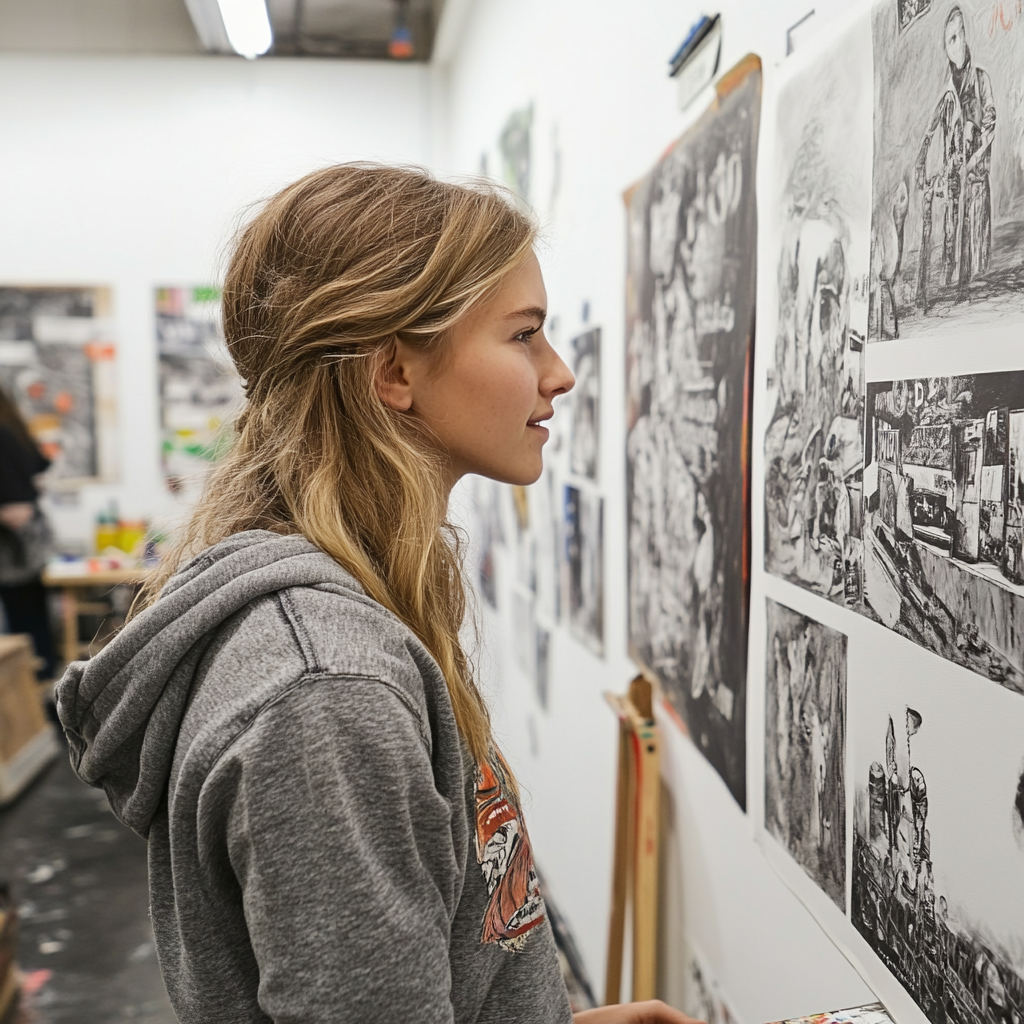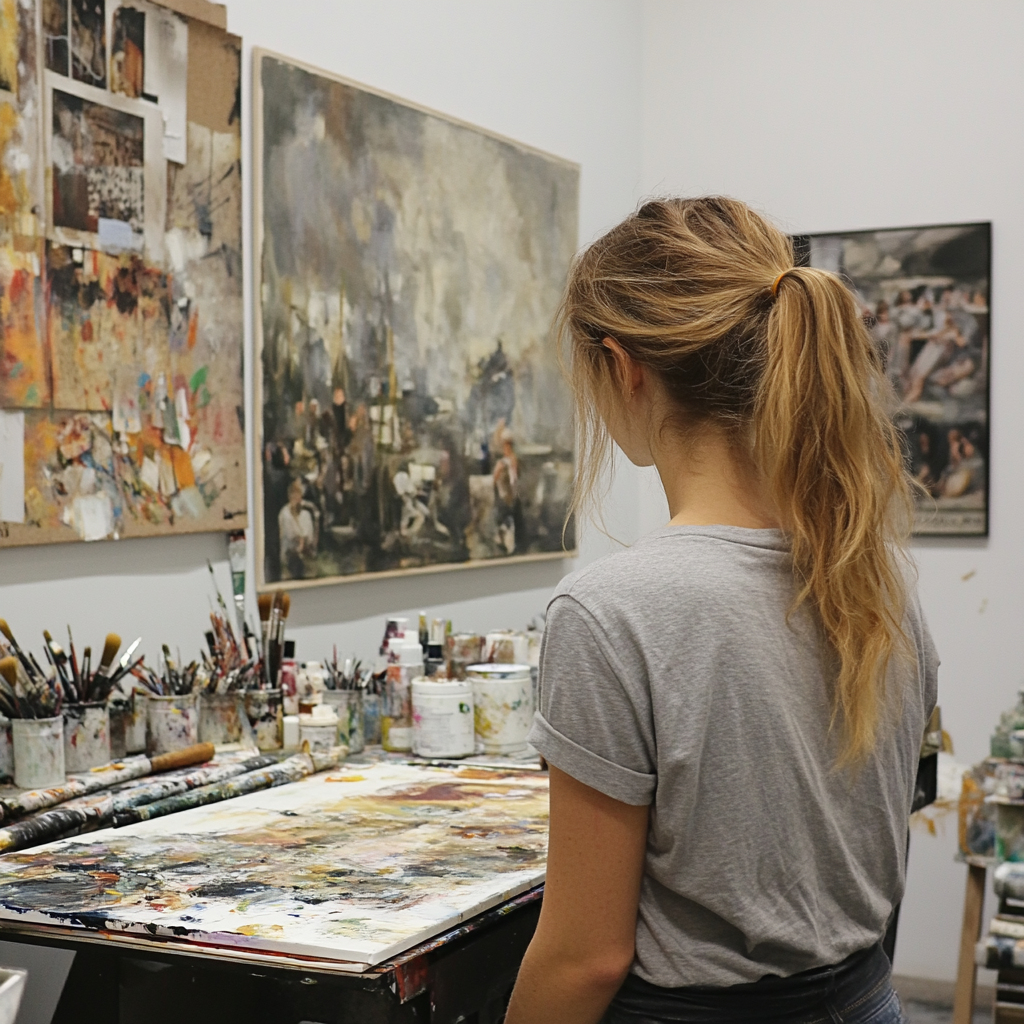Creating a compelling art portfolio is a crucial step for aspiring artists seeking admission to college or university art programs. A well-structured portfolio showcases your artistic skills, creative vision, and personal growth, helping admissions committees understand your potential as an artist. Here’s a comprehensive guide on how to build a successful art portfolio for college admissions.
Table of Contents

1. Understand the Requirements
Before you begin assembling your portfolio, research the specific requirements of the colleges or programs you’re interested in. Each institution may have different guidelines regarding the number of pieces, format, and submission methods. Some common aspects to consider include:
- Number of Works: Most portfolios contain between 10 to 20 pieces, but check each program’s requirements.
- Mediums and Techniques: Programs may specify the types of artwork they want to see (e.g., drawing, painting, sculpture, digital art).
- Presentation Format: Determine if the portfolio should be submitted physically, digitally, or through an online platform.
2. Curate Your Best Work
Selecting the right pieces is essential to creating a strong portfolio. Aim to showcase your best work that demonstrates a range of skills, styles, and mediums. Here are some tips for curating your portfolio:
- Quality Over Quantity: Choose pieces that reflect your highest level of craftsmanship and creativity. It’s better to have fewer exceptional works than a larger number of mediocre ones.
- Diversity of Mediums: Include various techniques and materials to demonstrate your versatility. This could encompass drawing, painting, photography, printmaking, or digital art.
- Consistent Theme or Style: Consider having a unifying theme or style across your portfolio to create a cohesive narrative. This could be a specific subject matter or an exploration of a particular concept.

3. Show Your Process
Admissions committees appreciate seeing how you approach your art. Including process work can provide insight into your creative journey and problem-solving skills. Here’s how to incorporate this into your portfolio:
- Sketchbooks and Studies: Include images of sketchbook pages, studies, or preparatory work that led to your finished pieces. This showcases your thought process and development as an artist.
- Written Descriptions: Consider adding brief descriptions for each piece, explaining your inspiration, techniques, and the challenges you faced. This context can help reviewers better understand your work.
4. Create a Professional Presentation
The presentation of your portfolio can significantly impact how your work is perceived. Ensure your portfolio looks polished and professional. Here are some tips for effective presentation:
- Digital Portfolios: If submitting online, use high-quality images that are well-lit and clearly represent your artwork. Avoid cluttered backgrounds and distractions.
- Physical Portfolios: For physical submissions, use a clean and professional-looking portfolio case or binder. Arrange your pieces in a logical order, and ensure they are securely mounted or protected.
- Consistent Formatting: Maintain a consistent format for your written descriptions, including font style, size, and layout, to ensure a cohesive look throughout your portfolio.

5. Get Feedback and Revise
Before submitting your portfolio, seek feedback from teachers, mentors, or peers. Constructive criticism can help you identify strengths and areas for improvement. Here are ways to gather feedback:
- Portfolio Reviews: Participate in portfolio review sessions at your school or local art community. Receiving insights from experienced artists and educators can be invaluable.
- Online Communities: Join online art forums or social media groups where you can share your work and receive feedback from fellow artists.
6. Tailor Your Portfolio for Each Application
If you’re applying to multiple schools, consider tailoring your portfolio for each application. Research each program’s focus, faculty, and values, and select pieces that align with their vision. Highlighting relevant work can demonstrate your interest and suitability for the program.
7. Prepare for the Interview
Some art programs may require an interview as part of the admissions process. Be prepared to discuss your portfolio, artistic influences, and aspirations. Here are a few tips for a successful interview:
- Know Your Work: Be ready to explain the concepts behind your pieces, the techniques you used, and your artistic journey.
- Be Authentic: Share your passion for art and your future goals. Authenticity can resonate with interviewers and leave a lasting impression.

Conclusion
Building a successful art portfolio for college admissions requires careful planning, thoughtful curation, and attention to detail. By showcasing your best work, demonstrating your creative process, and presenting your pieces professionally, you can create a compelling portfolio that reflects your artistic identity and potential. As you embark on this journey, remember to be true to yourself and let your passion for art shine through. With dedication and perseverance, you’ll be well on your way to achieving your goals in the world of art.